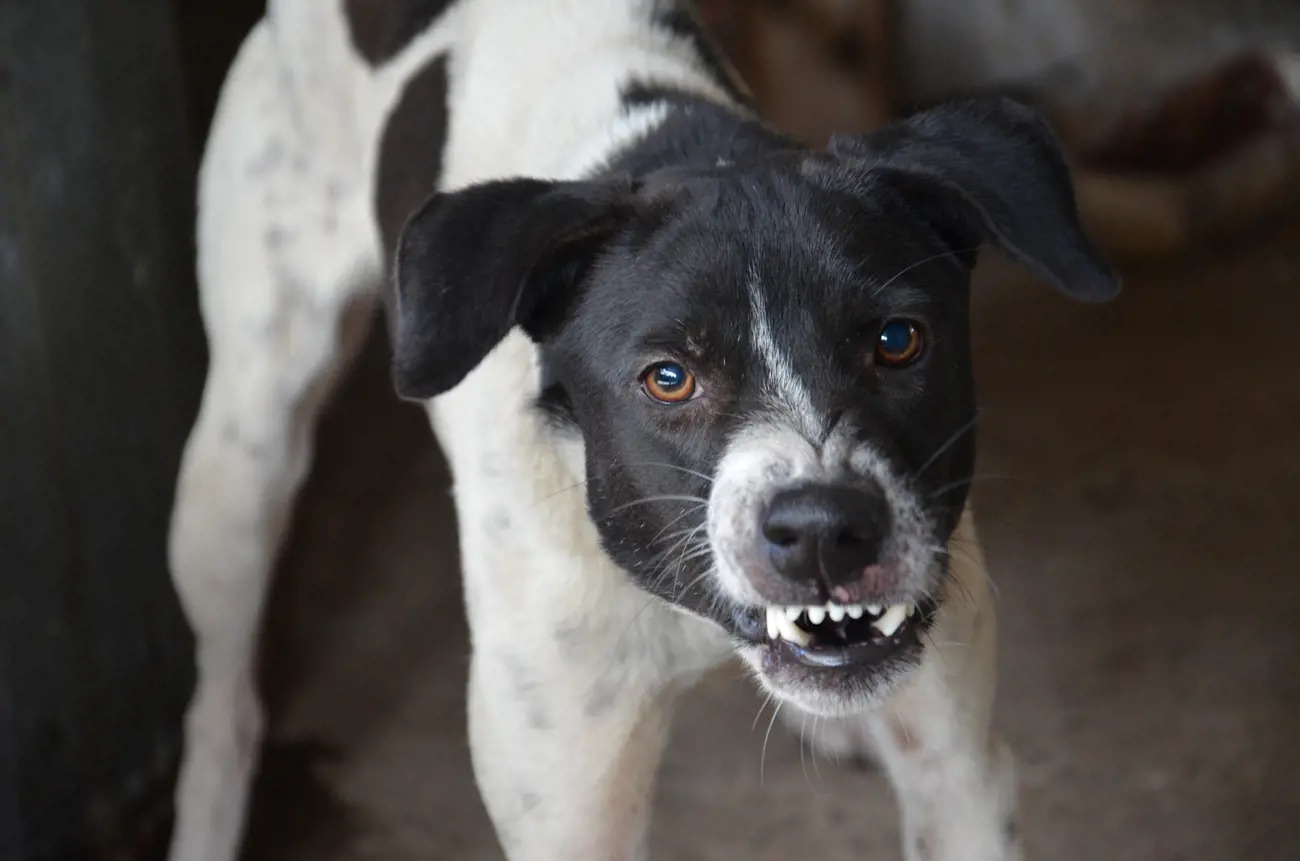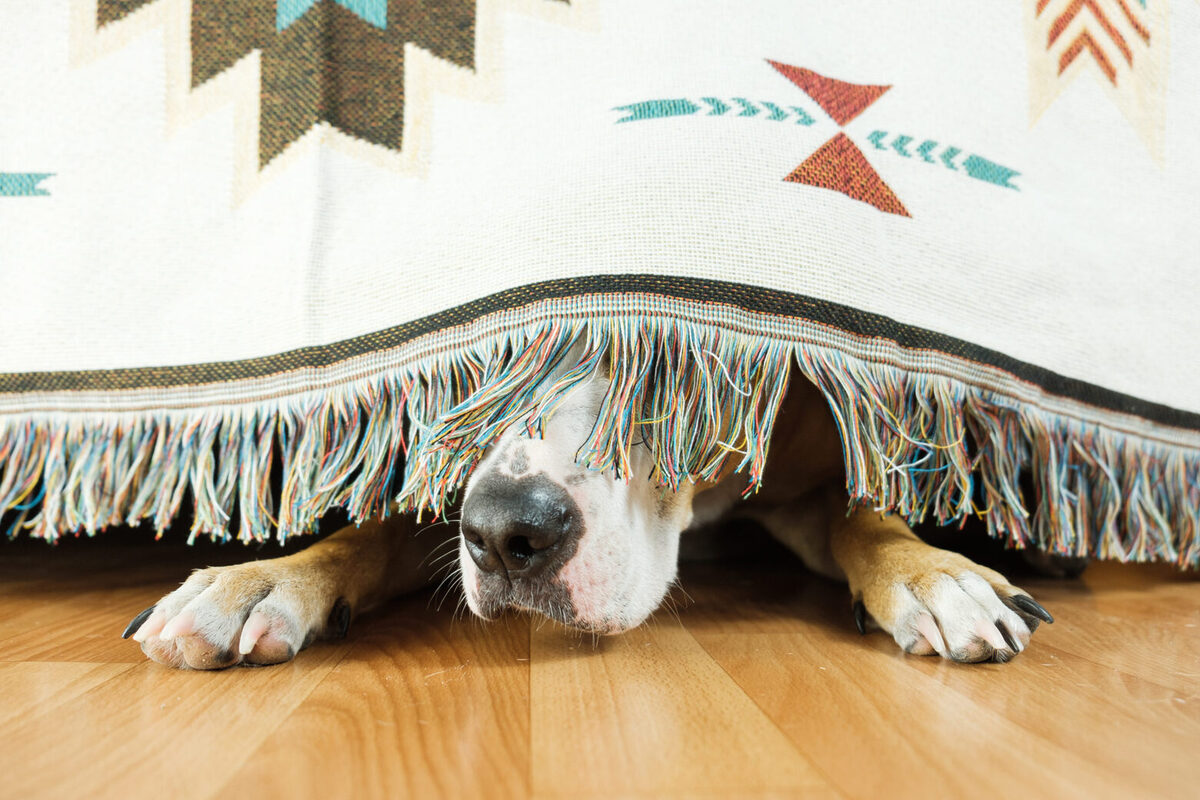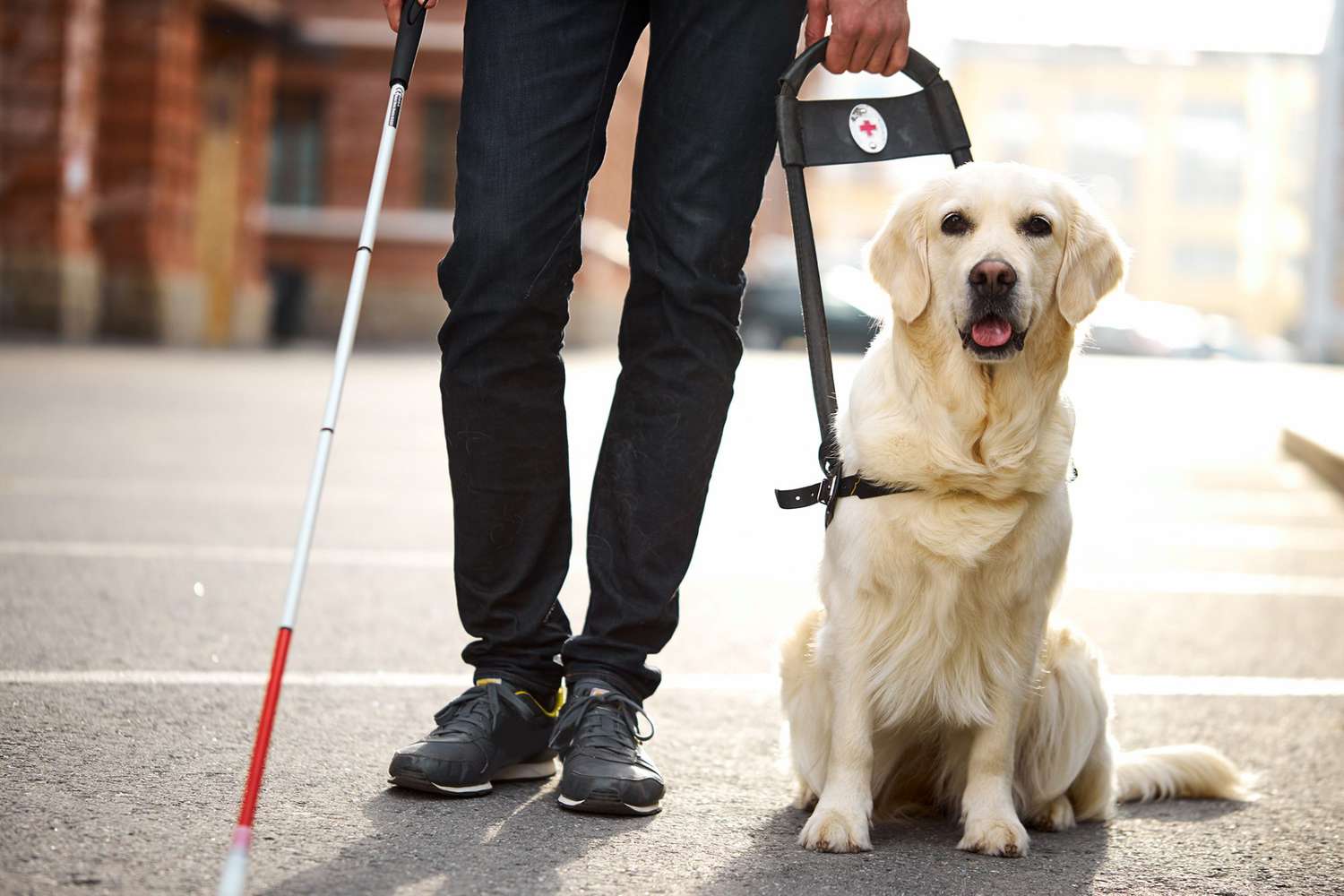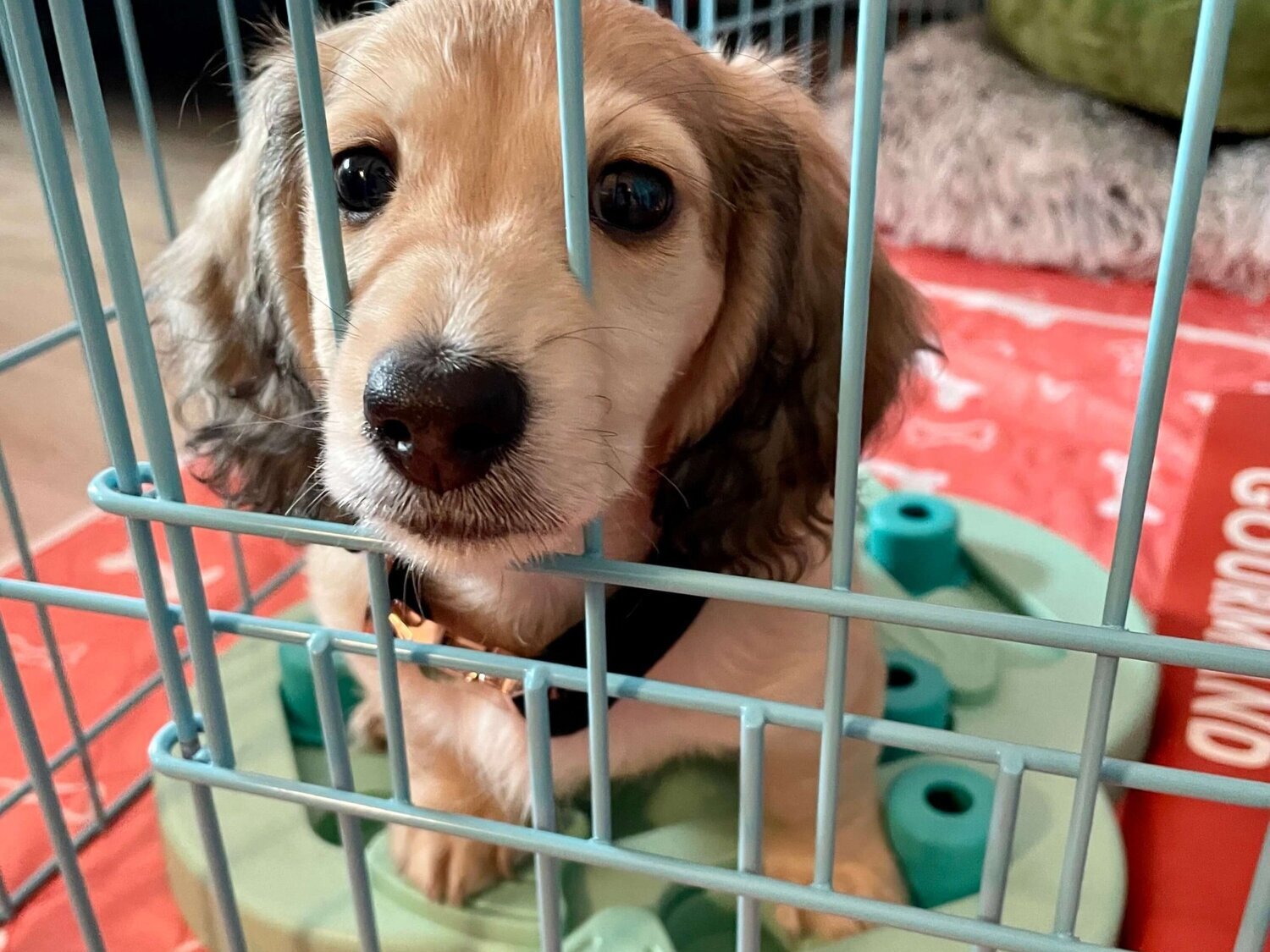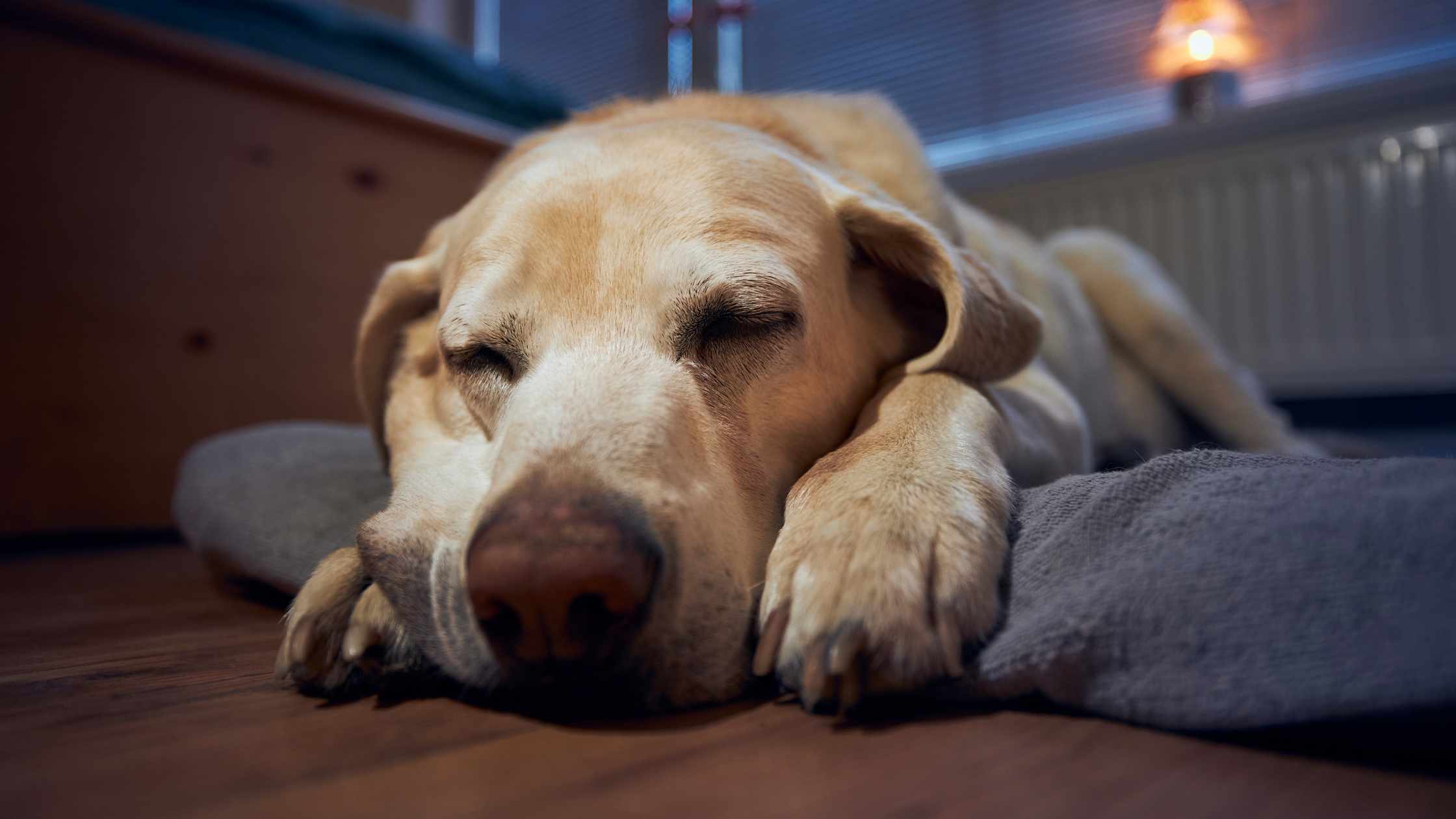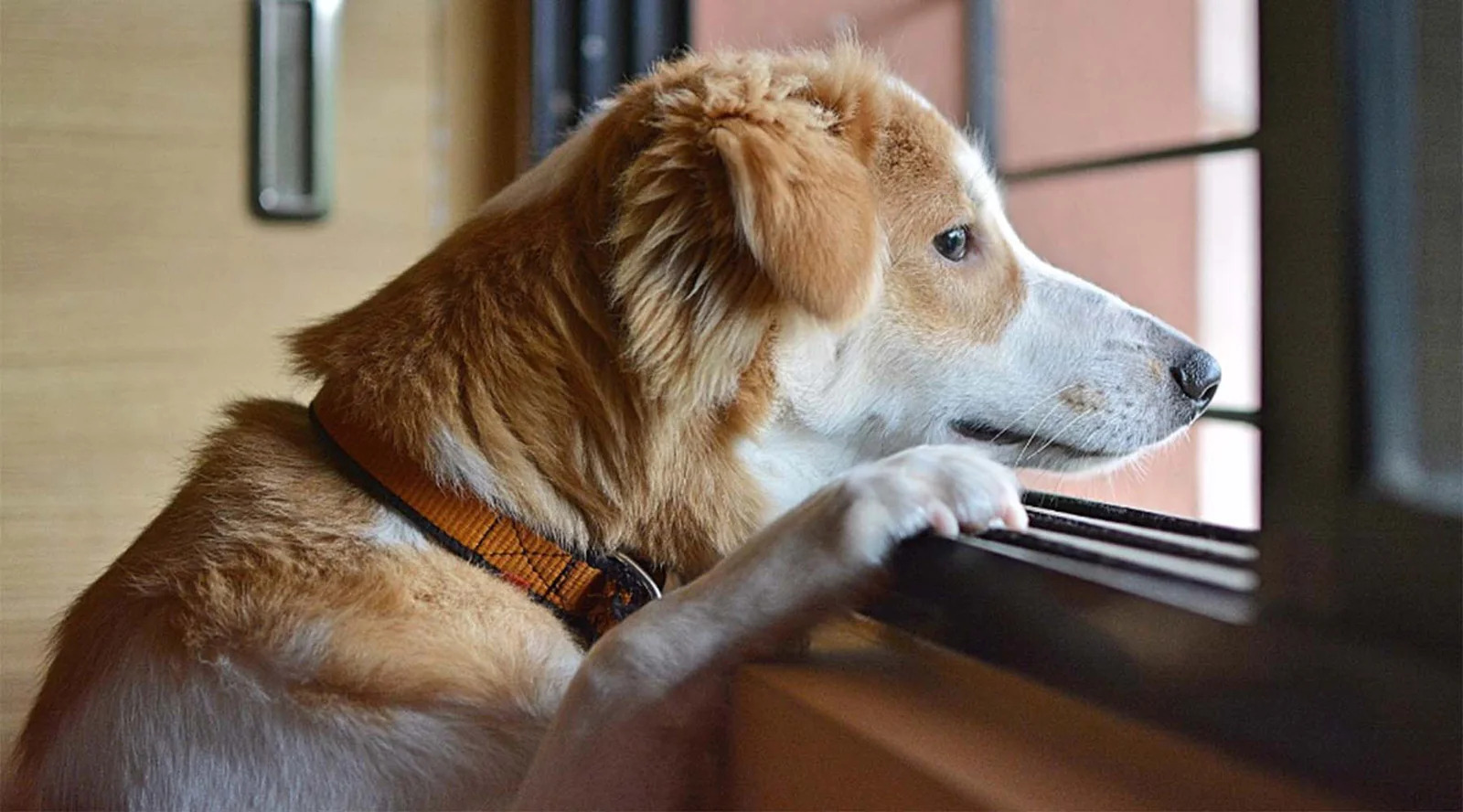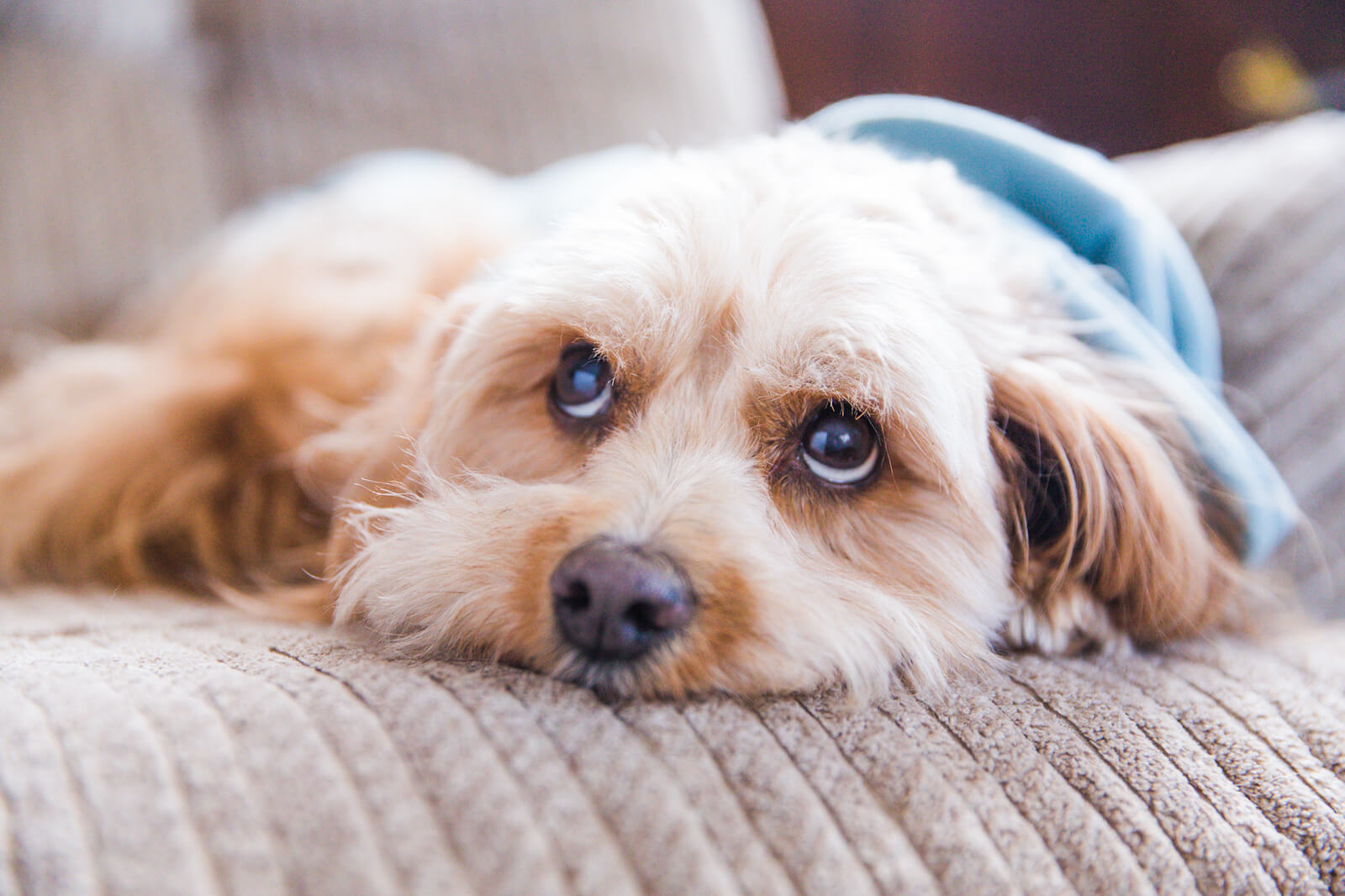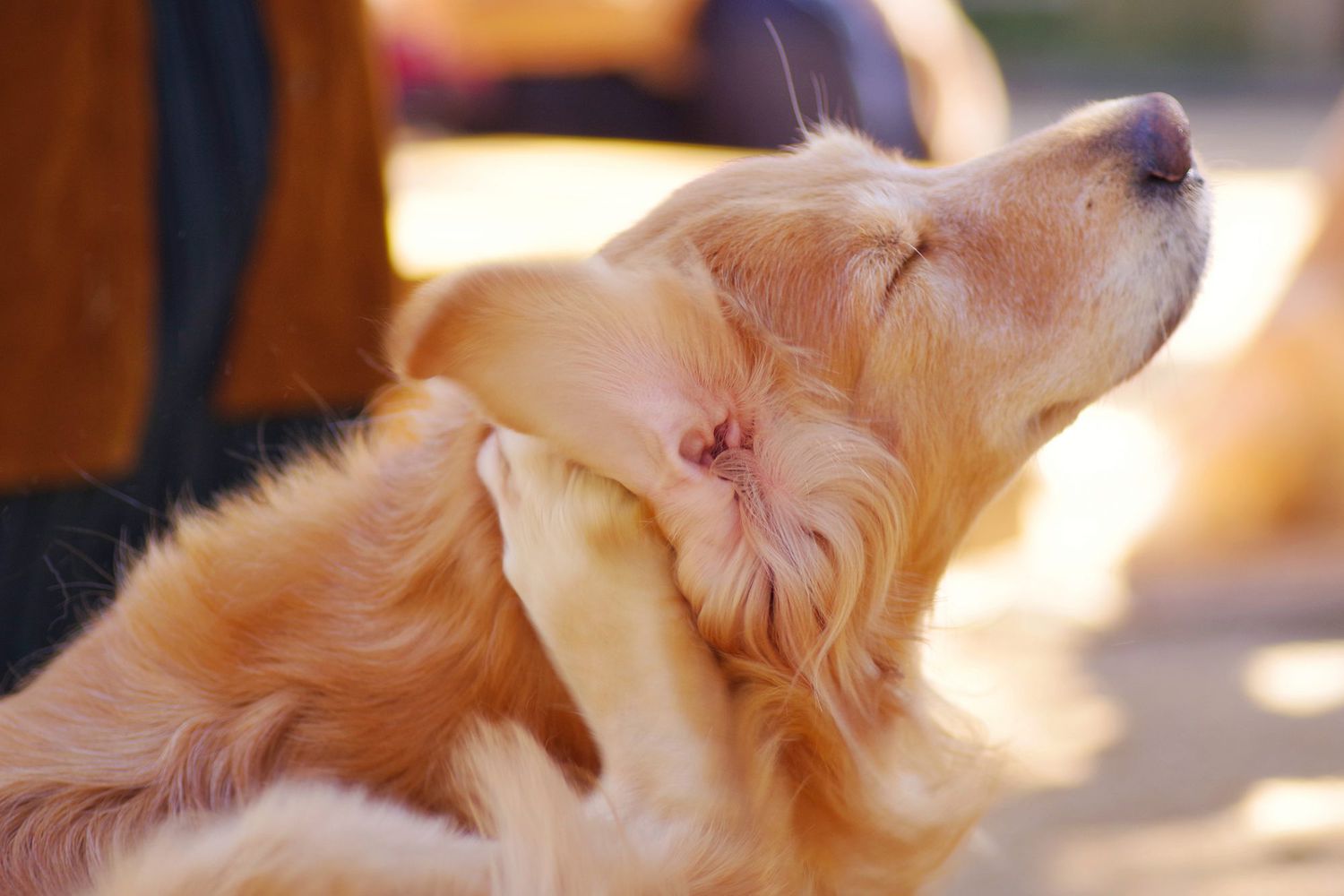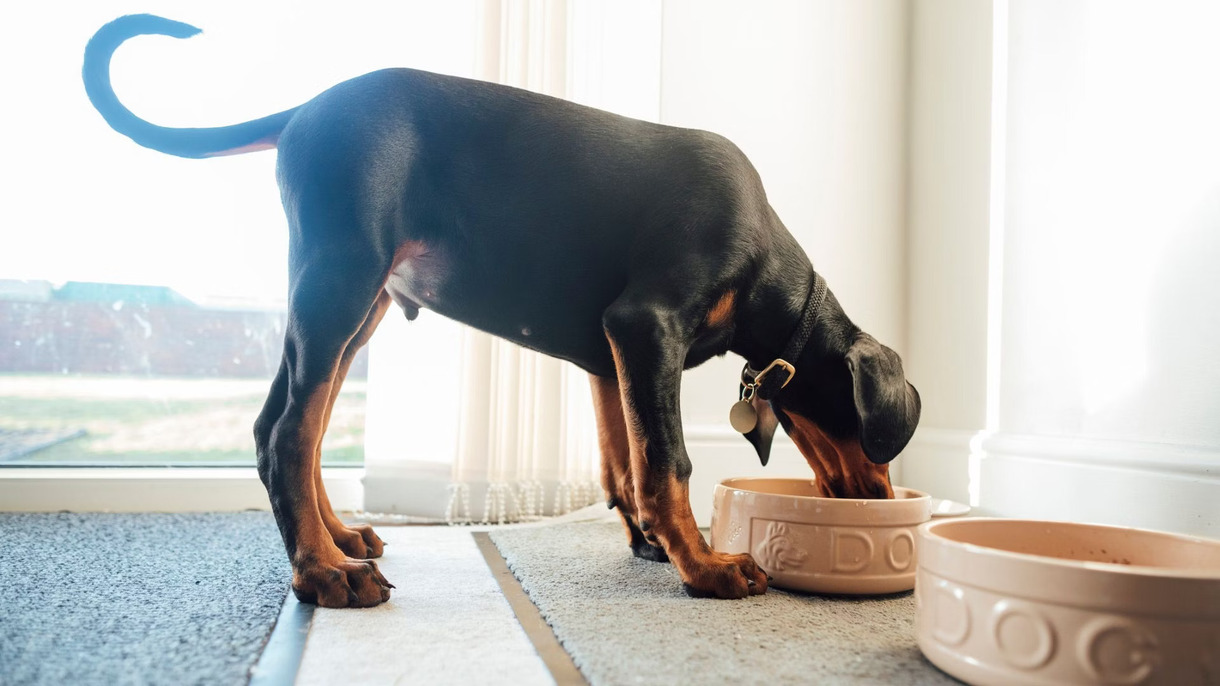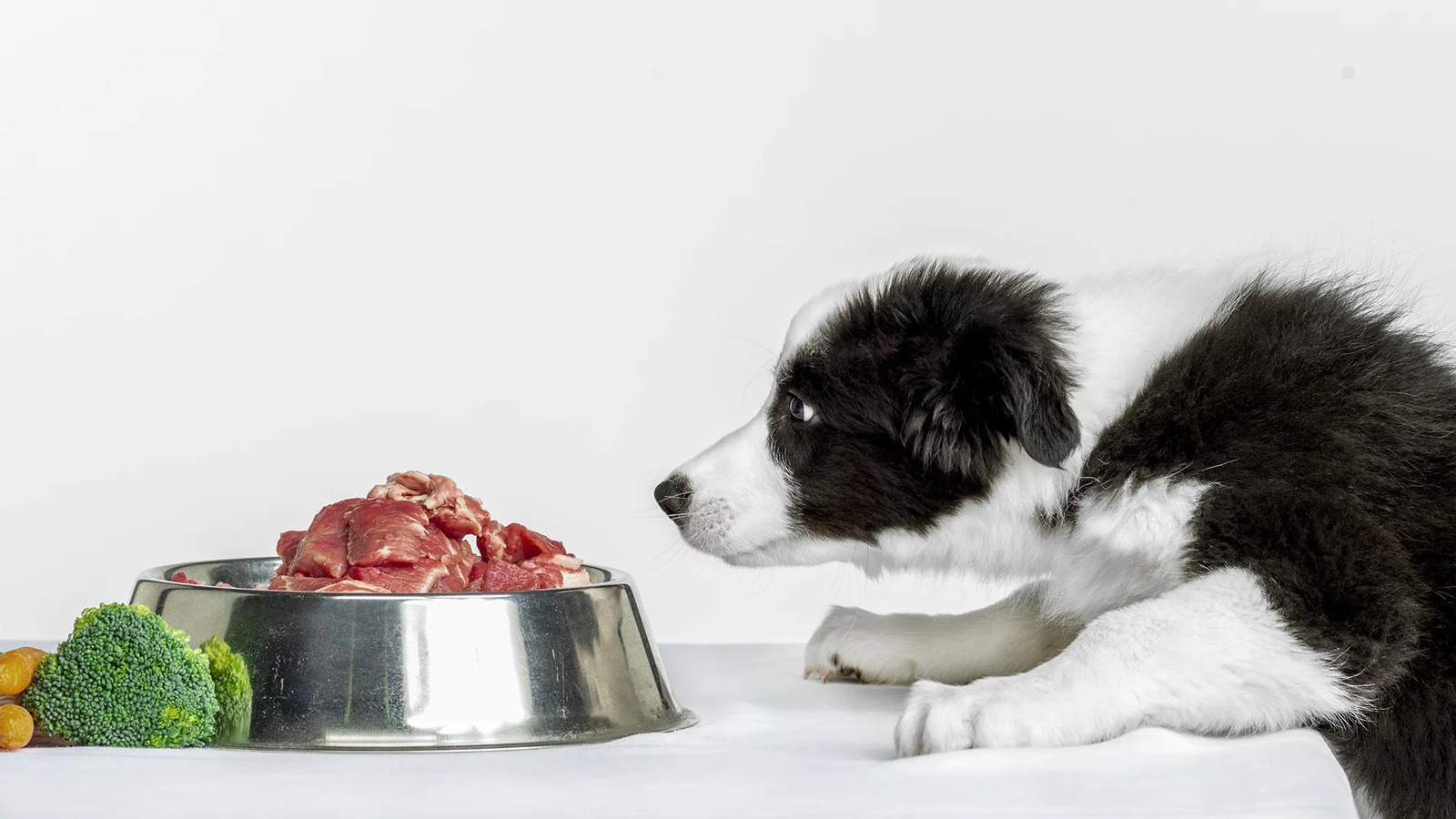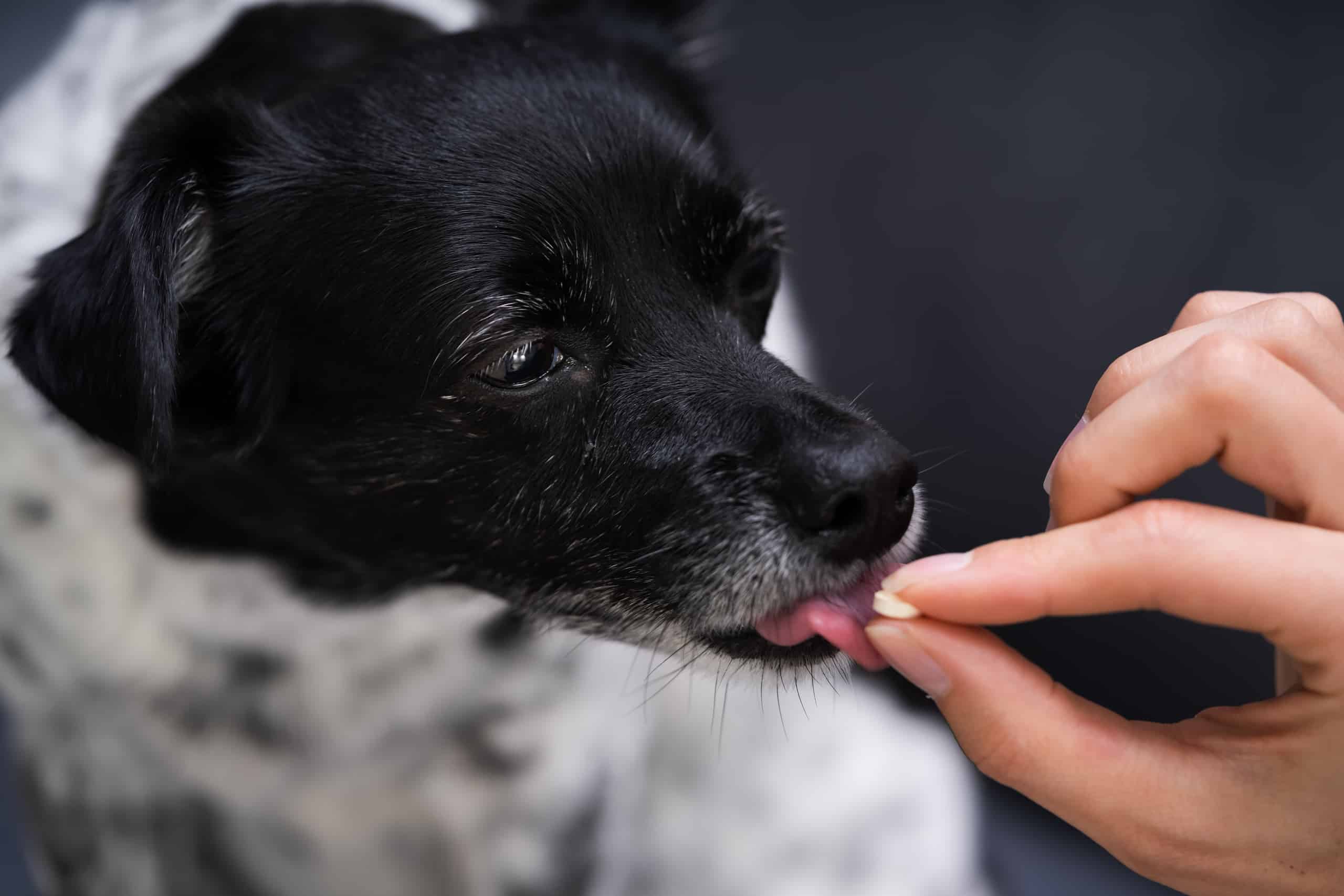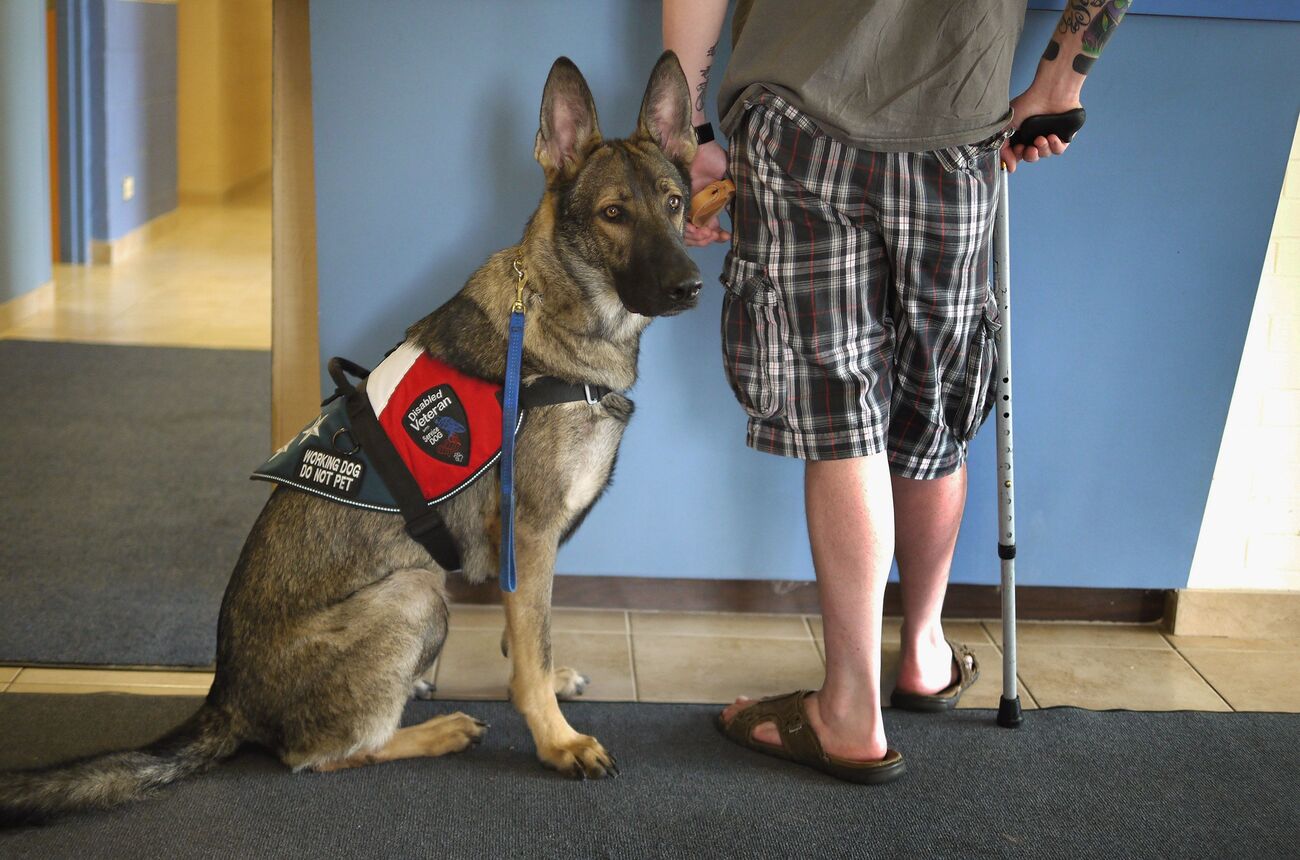Home>Health & Wellness>Behavior & Cognitive Care>How To Help My Dog Overcome Noise Anxiety
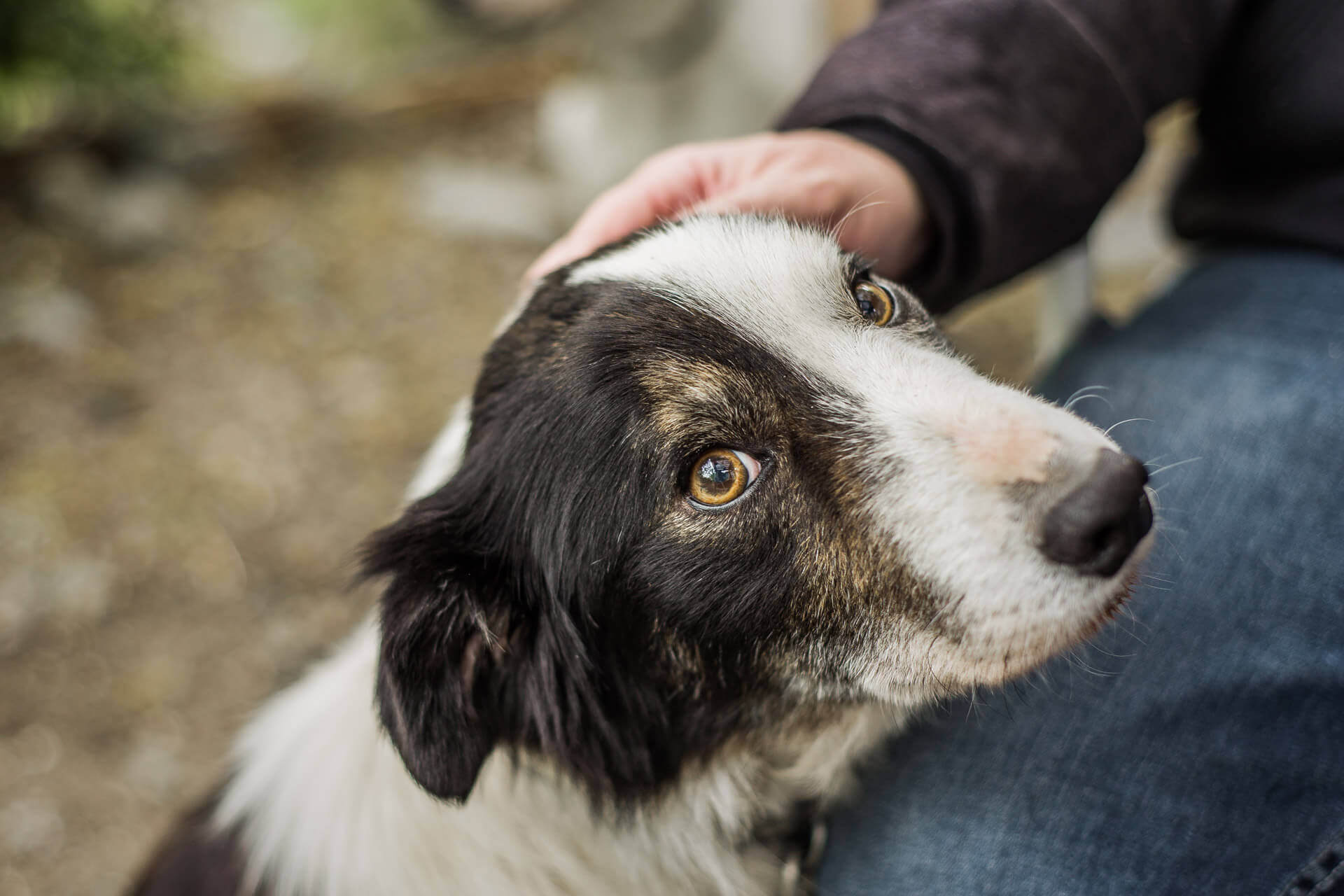

Behavior & Cognitive Care
How To Help My Dog Overcome Noise Anxiety
Published: January 29, 2024
Learn effective strategies to help your dog overcome noise anxiety with behavior and cognitive care techniques. Find solutions to calm your pet's fears and improve their well-being.
(Many of the links in this article redirect to a specific reviewed product. Your purchase of these products through affiliate links helps to generate commission for Pawsomeoldies.com, at no extra cost. Learn more)
Table of Contents
Understanding Noise Anxiety in Dogs
Noise anxiety, also known as noise phobia or noise sensitivity, is a common issue that affects many dogs. It refers to an intense fear or discomfort experienced by dogs in response to loud or unexpected noises. Dogs with noise anxiety may exhibit a range of distressing behaviors, including trembling, panting, pacing, hiding, or seeking excessive reassurance from their owners.
The causes of noise anxiety in dogs can vary, but it is often linked to a combination of genetic predisposition, past experiences, and environmental factors. Some dogs may have a genetic predisposition to being more sensitive to loud noises, while others may develop noise anxiety as a result of traumatic experiences, such as being exposed to a particularly frightening or startling noise. Additionally, lack of exposure to different sounds during the critical socialization period in puppyhood can also contribute to noise anxiety in dogs.
It's important for dog owners to recognize the signs of noise anxiety in their pets. Common triggers for noise anxiety in dogs include thunderstorms, fireworks, construction noises, vacuum cleaners, and even traffic sounds. Understanding your dog's specific triggers is crucial in addressing their anxiety effectively.
When a dog experiences noise anxiety, their body undergoes a stress response, leading to the release of stress hormones such as cortisol and adrenaline. This physiological reaction can manifest as increased heart rate, dilated pupils, and heightened alertness. Understanding the physical and emotional impact of noise anxiety on dogs is essential for implementing appropriate interventions to help them cope with their fears.
By gaining a deeper understanding of noise anxiety in dogs, pet owners can take proactive steps to support their furry companions and provide them with the necessary care and comfort during distressing situations. Recognizing the signs, identifying triggers, and empathizing with the emotional turmoil experienced by dogs with noise anxiety are crucial components of effectively addressing this common canine issue.
Read more: How To Help My Dog’s Anxiety From Fireworks
Identifying Triggers for Your Dog
Identifying the specific triggers that provoke noise anxiety in your dog is a fundamental step in addressing their distress. Dogs can exhibit anxiety in response to a wide range of noises, and pinpointing the exact triggers is essential for implementing targeted interventions. By closely observing your dog's behavior and reactions to various sounds, you can gain valuable insights into their specific triggers and tailor your approach accordingly.
One common trigger for noise anxiety in dogs is thunderstorms. The loud claps of thunder, accompanied by flashes of lightning, can evoke intense fear and unease in many dogs. Additionally, fireworks, with their sudden bursts of noise and bright lights, are notorious for triggering anxiety in dogs. Other common triggers include construction noises, such as drilling or hammering, as well as household sounds like vacuum cleaners or kitchen appliances.
To identify your dog's triggers, pay close attention to their behavior during different sound-related events. Observe how they react during thunderstorms, fireworks displays, or when exposed to household noises. Note any signs of distress, such as trembling, panting, pacing, or seeking refuge in secluded areas. By documenting your dog's reactions to specific noises, you can start to identify patterns and pinpoint the triggers that provoke their anxiety.
In addition to overt reactions, subtle cues such as increased alertness, restlessness, or changes in body language can also indicate discomfort in response to certain sounds. Dogs may exhibit avoidance behaviors or seek comfort from their owners when confronted with their triggers. By recognizing these subtle signs, you can gain a deeper understanding of your dog's individual sensitivities and tailor your approach to managing their noise anxiety.
Furthermore, it's important to consider the context in which the triggering noises occur. For example, if your dog exhibits anxiety specifically during evening walks when fireworks are more common, this contextual association can help you narrow down the triggers. By identifying the specific circumstances and environments in which your dog's anxiety is most pronounced, you can better anticipate and address their distress.
By diligently observing your dog's reactions to various noises and considering the contextual factors at play, you can gradually compile a comprehensive list of their triggers. This knowledge forms the foundation for implementing targeted desensitization and counterconditioning techniques, creating a safe space for your dog, and selecting appropriate calming aids to alleviate their noise anxiety effectively. Understanding your dog's triggers is a crucial step towards providing them with the support and comfort they need to overcome noise anxiety and lead a happier, more relaxed life.
Creating a Safe Space for Your Dog
Creating a safe space for your dog is a pivotal strategy in managing their noise anxiety and providing them with a comforting refuge during distressing situations. A safe space serves as a sanctuary where your dog can seek solace and feel secure when confronted with triggering noises. By carefully designing and introducing a designated safe space, you can significantly alleviate your dog's anxiety and empower them to cope with challenging auditory stimuli.
When establishing a safe space for your dog, consider their individual preferences and behavior. Dogs often seek out enclosed, den-like spaces when feeling anxious or overwhelmed. Therefore, providing a cozy, secluded area can offer a sense of security and reassurance. This can be achieved by setting up a comfortable crate, a designated corner in a quiet room, or a cozy nook with their favorite bedding and toys.
Incorporating familiar scents within the safe space can further enhance its calming effect. Your dog's favorite blanket or an item of your clothing that carries your scent can provide a comforting and familiar aroma, promoting relaxation and reducing anxiety. Additionally, playing soft, soothing music or utilizing white noise machines can help mask triggering sounds and create a serene ambiance within the safe space.
Introducing positive associations with the safe space is essential to encourage your dog to view it as a secure retreat. Incorporate enjoyable activities such as feeding, treat-dispensing toys, or engaging in interactive play within the designated area. By associating the safe space with positive experiences, your dog will develop a positive emotional connection with the space, making it a go-to refuge during distressing noise events.
Consistency and gradual acclimatization are key when introducing the safe space to your dog. Encourage them to explore and spend time in the designated area during calm periods, gradually increasing their comfort level. Avoid forcing your dog into the safe space or using it as a form of punishment, as this can create negative associations and undermine its effectiveness as a calming retreat.
By creating a safe space tailored to your dog's preferences and gradually acclimating them to its benefits, you can empower your furry companion to navigate noise anxiety with greater resilience and composure. A well-designed safe space serves as a valuable tool in providing comfort and security, ultimately contributing to your dog's overall well-being and emotional stability.
Desensitization and Counterconditioning Techniques
Desensitization and counterconditioning are powerful behavior modification techniques used to help dogs overcome noise anxiety in a gradual and positive manner. These methods aim to change the dog's response to triggering noises by replacing fear and anxiety with a more relaxed and positive association. By systematically exposing the dog to low levels of the triggering noise and pairing it with positive experiences, desensitization and counterconditioning can effectively reduce the dog's anxiety over time.
Desensitization involves exposing the dog to the triggering noise at a very low intensity, below the threshold that elicits a fear response. This gradual exposure allows the dog to acclimate to the sound without triggering an anxious reaction. For example, if the dog is fearful of thunderstorms, playing recordings of distant thunder at a barely audible level can serve as the initial step in the desensitization process.
Counterconditioning works in conjunction with desensitization by associating the triggering noise with something positive, such as treats, toys, or affection. When the dog hears the low-level noise during desensitization exercises, they receive rewards or engage in enjoyable activities. This creates a new, positive association with the previously fear-inducing sound, gradually replacing the fear response with a positive one.
It's crucial to proceed at the dog's pace and ensure that they remain relaxed and comfortable throughout the desensitization and counterconditioning process. As the dog becomes more tolerant of the low-level noise and exhibits a positive response, the intensity of the sound can be gradually increased in small increments. Over time, the dog learns to associate the once-frightening noise with positive outcomes, leading to a reduction in anxiety and fear.
Consistency, patience, and positive reinforcement are key elements of desensitization and counterconditioning. These techniques require dedication and a deep understanding of the dog's individual needs and responses. By implementing desensitization and counterconditioning in a supportive and nurturing manner, dog owners can significantly alleviate their pet's noise anxiety and help them build resilience in the face of triggering noises.
Incorporating desensitization and counterconditioning techniques into a comprehensive noise anxiety management plan can yield long-term benefits for the dog, fostering a sense of security and confidence in the presence of previously distressing sounds. These techniques empower dogs to reframe their perception of triggering noises, ultimately enhancing their overall well-being and quality of life.
Using Calming Aids and Supplements
In addition to behavioral interventions, the use of calming aids and supplements can play a valuable role in supporting dogs with noise anxiety. These aids are designed to promote relaxation, reduce stress, and alleviate the negative impact of triggering noises on dogs' emotional well-being. When integrated thoughtfully into a comprehensive noise anxiety management plan, calming aids and supplements can provide additional support and comfort for dogs facing distressing auditory stimuli.
One popular calming aid for dogs is the use of pressure wraps or vests, which apply gentle, constant pressure to the dog's torso, akin to a comforting hug. This pressure has been shown to have a calming effect on dogs, similar to swaddling an infant. The sense of security provided by pressure wraps can help reduce anxiety during noise events, offering a tangible source of comfort for dogs experiencing heightened distress.
Furthermore, pheromone-based products, such as diffusers, sprays, or collars, can emit synthetic versions of calming pheromones that mimic those naturally produced by mother dogs to soothe their puppies. These pheromones have been found to have a calming effect on dogs of all ages, helping to create a sense of security and reassurance, particularly in anxiety-inducing situations like thunderstorms or fireworks displays.
Supplements containing natural ingredients with calming properties, such as chamomile, valerian root, or L-theanine, can also be beneficial in promoting relaxation and reducing anxiety in dogs. These supplements are formulated to support emotional balance and can be used as part of a holistic approach to managing noise anxiety. When considering the use of supplements, consulting with a veterinarian is essential to ensure the safety and appropriateness of the chosen product for the individual dog.
Additionally, incorporating specially designed calming music or sound recordings can contribute to creating a serene and soothing environment for dogs during noise events. These auditory aids are crafted to have a calming effect on dogs, masking triggering noises and promoting a sense of tranquility. When played in conjunction with other calming strategies, such as desensitization and counterconditioning exercises, calming music can enhance the overall effectiveness of the noise anxiety management plan.
It's important to note that while calming aids and supplements can be valuable tools in supporting dogs with noise anxiety, they should be used in conjunction with behavioral interventions and environmental modifications. Each dog's response to calming aids may vary, and it's essential to monitor their reactions and adjust the approach as needed. By integrating calming aids and supplements into a holistic noise anxiety management plan, dog owners can provide their furry companions with comprehensive support, ultimately contributing to a calmer, more resilient, and emotionally balanced canine companion.
Read more: How To Help Dogs With Anxiety At Night
Seeking Professional Help for Severe Cases
In instances where a dog's noise anxiety significantly impairs their quality of life or poses a risk to their well-being, seeking professional help is paramount. Professional intervention can provide tailored strategies, expert guidance, and, if necessary, pharmacological support to address severe cases of noise anxiety in dogs.
Veterinary behaviorists, certified dog behavior consultants, or qualified trainers with expertise in behavior modification can offer invaluable support for dogs with severe noise anxiety. These professionals possess the knowledge and experience to conduct comprehensive assessments of the dog's behavior, triggers, and overall well-being. Through detailed evaluations, they can develop personalized behavior modification plans that address the specific needs and sensitivities of the affected dog.
Behavior modification plans for severe noise anxiety may encompass advanced desensitization and counterconditioning protocols, incorporating sophisticated techniques to gradually acclimate the dog to triggering noises and reshape their emotional responses. These plans are tailored to the individual dog's threshold and may involve the use of specialized equipment, such as sound generators or advanced behavior modification tools, to facilitate the process effectively.
In some cases, pharmacological intervention may be recommended as part of a multifaceted treatment approach. Veterinary behaviorists or veterinarians with expertise in behavior medicine can assess the dog's suitability for medication and prescribe appropriate pharmacological support to alleviate severe anxiety. Medications such as anti-anxiety drugs or antidepressants may be utilized to complement behavior modification efforts and provide the dog with the necessary relief from overwhelming anxiety.
Furthermore, professional guidance can extend to environmental modifications and management strategies aimed at creating a conducive and supportive living environment for dogs with severe noise anxiety. This may involve implementing specialized soundproofing measures, creating designated safe zones, and optimizing the dog's daily routines to minimize exposure to triggering noises and reduce their overall stress levels.
Seeking professional help for severe cases of noise anxiety in dogs is a proactive and compassionate approach that prioritizes the well-being and emotional health of the affected animals. By collaborating with knowledgeable professionals, dog owners can access tailored expertise, evidence-based interventions, and ongoing support to help their furry companions overcome severe noise anxiety and lead fulfilling, anxiety-free lives.
In summary, professional assistance for severe cases of noise anxiety in dogs offers a comprehensive and specialized approach that addresses the complex behavioral and emotional challenges faced by affected animals. Through expert guidance, tailored behavior modification plans, and, if necessary, pharmacological support, dogs with severe noise anxiety can receive the dedicated care and intervention needed to navigate their anxiety and thrive in a supportive, understanding environment.
